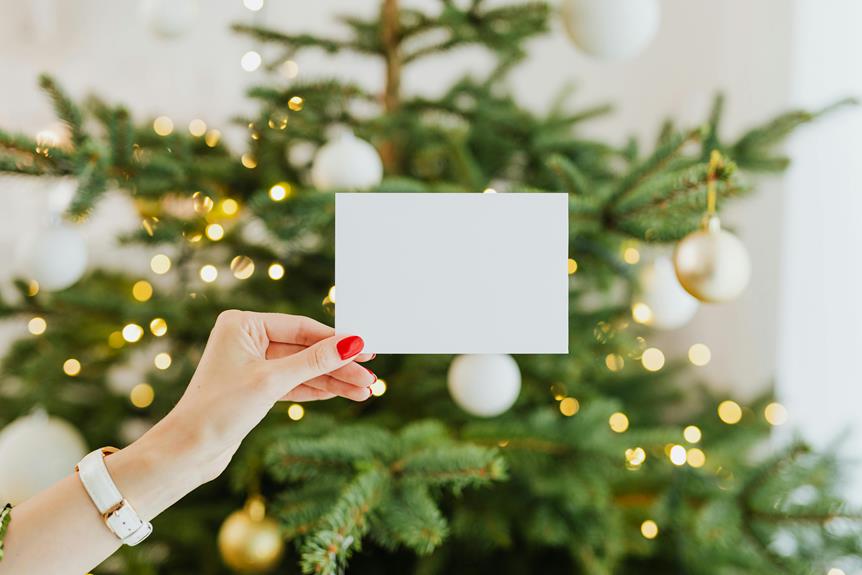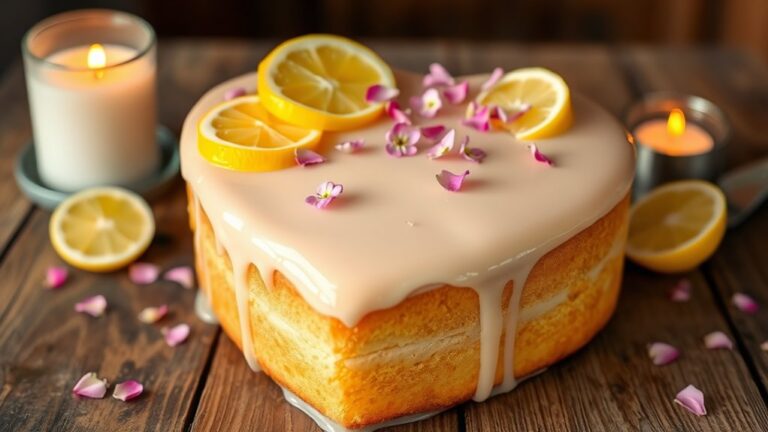How Long Does a Live Tree Last for Christmas
You can expect a well-cared-for live Christmas tree to last anywhere from two to five weeks, depending on factors like species, freshness, and maintenance. Choosing a healthy tree with fresh, supple needles and minimal brown needles is essential. Environmental factors, such as cooler temperatures and higher humidity, also greatly impact tree lifespan. Regular maintenance, including adequate water intake and trimming the trunk, can extend the tree's life. By understanding the factors that affect tree longevity, you can take steps to keep your tree fresh and healthy throughout the holiday season. Learn how to maximize your tree's lifespan with proper care and maintenance techniques.
Choosing a Healthy Tree
When choosing a healthy Christmas tree, you're likely to find one that lasts longer if you follow a few simple guidelines.
Tree selection tips include inspecting the tree's overall shape and fullness to verify quality, as a well-shaped tree indicates healthy growth. Fresh tree needles should feel soft and supple rather than brittle, signaling overall health.
Gently tugging at the branches should result in minimal needle loss, a sign of good needle retention. Avoid selecting spruce trees if you prefer softer needle options, as they tend to be more brittle.
Opt for a tree with fewer brown needles, as this indicates better freshness and robustness. By considering these factors, you can make an informed decision and find a tree that will thrive throughout the holiday season.
Factors Affecting Tree Longevity
As you bring your live Christmas tree home, you're probably wondering what factors will affect its longevity.
The tree's lifespan can be considerably impacted by environmental factors and the level of care it receives. To keep your tree fresh throughout the holiday season, it's essential to understand how factors like room temperature, humidity, and tree maintenance, including water consumption and placement near heat sources, contribute to its overall health.
Environmental Factors Impact
Your home's environmental conditions play a significant role in determining the longevity of your live Christmas tree.
Temperature effects and humidity levels are particularly vital, as cooler and more humid conditions promote better needle retention and freshness.
Direct sunlight or heat sources can rapidly dry out your tree, reducing its lifespan and leading to increased needle shedding.
For instance, placing your tree near a fireplace or heating vent can greatly impact its health and longevity.
Typically, fir and cypress species last longer, up to 5 weeks, in ideal environmental conditions compared to pine and spruce, which usually last around 2-3 weeks.
Tree Care and Maintenance
Regular tree care and maintenance greatly impact the longevity of your live Christmas tree, allowing it to thrive and last for an average of 4 to 5 weeks. Proper tree care includes regularly watering the tree to keep it hydrated, as well as placing it away from heat sources to prevent drying out. Additionally, checking the tree for any signs of pests or disease can help maintain its health. How Many Weeks Until Christmas? It is important to start preparing your live Christmas tree early to ensure it stays vibrant and fresh throughout the holiday season. Regular maintenance and care will not only prolong the life of your tree, but also contribute to a beautiful and festive holiday atmosphere in your home.
When decorating, be mindful of tree ornaments and festive decorations that may cause damage or heat buildup.
Make certain your tree receives adequate water, as a fresh-cut tree can absorb up to a gallon daily, especially during the first two weeks.
Trimming 1-2 cm off the trunk after purchase and adding a mixture of sugar and vinegar to the water can also promote water absorption and stabilize pH.
By following these care tips and keeping your tree away from heat sources, you can enjoy a lush, vibrant Christmas tree throughout the holiday season.
Proper care is key to extending your tree's lifespan.
Proper Watering Techniques
To keep your live Christmas tree fresh and healthy, you'll need to master the art of proper watering techniques.
This involves selecting the right tree stand, one with a large water reservoir that allows the trunk to remain submerged, and checking the water level daily to guarantee your tree stays hydrated.
Water Level Checks
A freshly cut Christmas tree's water needs can be substantial, especially in the first two weeks after setup.
To guarantee proper hydration, you'll want to make daily water level checks a priority. A tree can consume up to a gallon of water daily, so it's important to replenish it immediately if the level drops below the base of the trunk.
This is significant for maintaining hydration and promoting water absorption, which is essential for the tree's overall health and longevity.
Regularly monitoring the water level will help you identify signs of dehydration, such as needle drop and browning, allowing you to take corrective action and keep your tree healthy and vibrant throughout the holiday season.
Tree Stand Selection
Your efforts to maintain your tree's hydration through daily water level checks will be for naught if you don't pair it with the right tree stand.
Selecting a tree stand with a large water reservoir is essential, as a tree can absorb up to a gallon of water daily in the first week. A proper tree stand can make all the difference in prolonging your tree's life.
Consider the following when choosing a tree stand:
- Choose a tree stand with a large water reservoir to accommodate your tree's hydration needs
- Select a stand that fits your tree's circumference securely to prevent water absorption issues
- Consider tree stand types with adjustable settings to accommodate different tree sizes
Daily Hydration Tips
Maintaining your live tree's hydration is essential to prolonging its life, and it starts with proper watering techniques.
Upon arrival, immediately place the tree in water to prevent sap from sealing the trunk. Use a tree stand with a large water reservoir, ensuring the water level remains high enough to keep the trunk submerged.
Create a hydration schedule, refilling the water daily as freshly cut trees can consume up to a gallon of water in the first week, especially during warm conditions.
Combine ½ cup granulated sugar and ½ cup vinegar in 5 gallons of water to nourish the tree.
Regularly apply misting techniques to the branches, maintaining moisture and preventing dryness to promote improved needle retention and overall tree health.
Trunk Care and Stand Selection
To guarantee your live tree lasts through Christmas, proper trunk care is vital, starting with a fresh cut of 1-2 centimeters from the base immediately after purchase. This removes sap that seals the wound, enhancing trunk hydration.
When selecting a tree stand, consider the following factors to guarantee stand stability and ideal water absorption:
- Choose a stand that fits the trunk circumference to prevent issues with water absorption.
- Opt for a stand with a large water reservoir, as trees can consume up to a gallon of water daily.
- Avoid trimming the outer layers of the trunk, as they're essential for hydration and maintaining the tree's health.
Regularly check the water level in the stand and replenish it daily to prolong the tree's life.
Safety and Maintenance Tips
Proper care of your live tree's trunk and selecting the right stand are just the beginning.
When it comes to fire safety, keep your tree at least 3 feet away from heat sources, such as radiators and fireplaces, to prevent rapid drying and needle shedding.
For light monitoring, avoid leaving lights on unattended for long periods, and regularly check bulbs and cords for damage to prevent electrical fires.
Consider using LED lights, which emit less heat than traditional bulbs, to protect the tree from drying out.
Maintain a cooler room temperature, ideally below 70°F (21°C), to extend the tree's freshness and longevity.
Christmas Tree Lifespan Variations
Your Christmas tree's lifespan can vary greatly depending on its species and freshness when you bring it home. This variation can make a big difference in how long you get to enjoy your tree as part of your holiday traditions.
The type of tree species you choose plays a significant role in determining its lifespan.
- Fir and cypress species can retain their freshness for up to 5 weeks, making them a great choice for a longer-lasting tree.
- Pine and spruce species generally last around 2 to 3 weeks, making them a better fit for a shorter holiday celebration.
- A tree's freshness at the time of purchase also affects its lifespan, with freshly cut trees from farms lasting longer than those from stores.
Signs of Decline and Disposal
Now that you've chosen a tree and it's set up in your home, it's time to monitor its condition and know when it's time to let it go.
As your tree ages, you'll notice signs of decline. Excessive needle drop is a primary indicator that your tree is drying out and nearing the end of its lifespan.
Browning and discoloration signs, brittle branches that break easily, and a noticeable loss of fragrance also suggest that it's time for disposal.
Visual cues such as wilting, drooping, and irregular appearances are additional indicators that the tree has reached the end of its life.
Keep an eye out for these signs, as they signal the tree's freshness has declined, and it's time to contemplate letting it go.
Sustainable Practices and Recycling
Embracing sustainable practices and recycling can markedly reduce the environmental impact of your Christmas tree, and there are several ways to make this happen.
If you choose a live potted tree, you can replant it after the holiday season, promoting sustainability and reducing waste. Alternatively, you can participate in community recycling initiatives.
- Many municipalities offer recycling programs that turn discarded Christmas trees into mulch or compost, benefiting local ecosystems.
- Utilizing a live tree can greatly diminish the carbon footprint associated with cutting down and disposing of traditional trees.
- Choosing to rent a live tree instead of purchasing can provide a sustainable option for festive celebrations while ensuring the tree is reused year after year.
Maximizing Tree Freshness and Care
Proper care can greatly extend the life of your live Christmas tree. To maximize freshness, make a fresh cut on the trunk before placing it in water, ideally trimming 1-2 centimeters to improve water absorption.
This simple tree preservation technique enables your tree to stay hydrated throughout the holiday season. As a general rule, daily monitoring of the water reservoir is essential, as Christmas trees can consume up to a gallon of water daily.
Adding a mixture of ½ cup granulated sugar and ½ cup vinegar to 5 gallons of water can help nourish the tree.
For effective holiday decor tips, keep your tree in a cool location, away from direct sunlight and heat sources to prolong its freshness.







